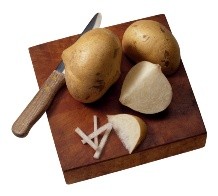While eating lunch with a co-worker, I asked if she had ever tasted a jicama. She replied, “no”. So I offered her a taste of one from my lunch. She looked at the slice of jicama, tasted it and then said, “It tastes ok, but what is in it for me?” I explained that as a vegetable, it will have some minerals, vitamins, and fiber.
Later as I thought about this conversation, I wondered if anyone ever asked that question before eating a piece of candy or a dessert. Usually, the response to a new sweet is, “where did you buy it” or “is it easy to bake” or “where did you find the recipe?”
In nutrition, fruits, vegetables, whole grains, legumes, nuts, dairy products, beef, poultry, pork, or seafood are called nutrient rich. This means that for the investment in calories, they have a return on the investment with protein, carbohydrate, healthy fat, vitamins, minerals, and fiber.
(Visit the website: www.nutrientrichfoods.org to find more information on nutrient rich foods)
Candy, cakes, donuts, cookies, brownies, pies etc. are called nutrient poor and calorie rich. They are called empty calories and don’t provide much for your calorie investment.
So the thought from this story is: when thinking about eating dessert, ask yourself, “Is it worth the calories”? Or as my friend said, “What’s in it for me”?




